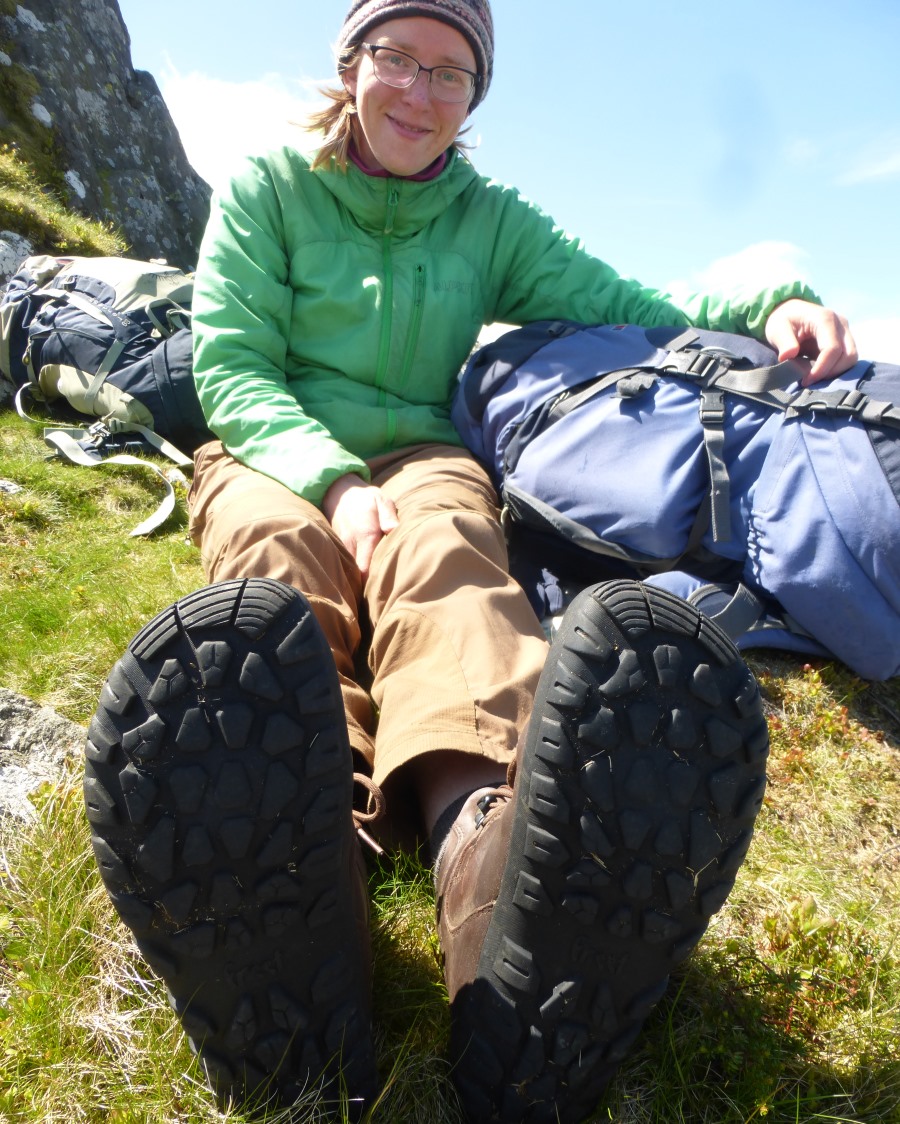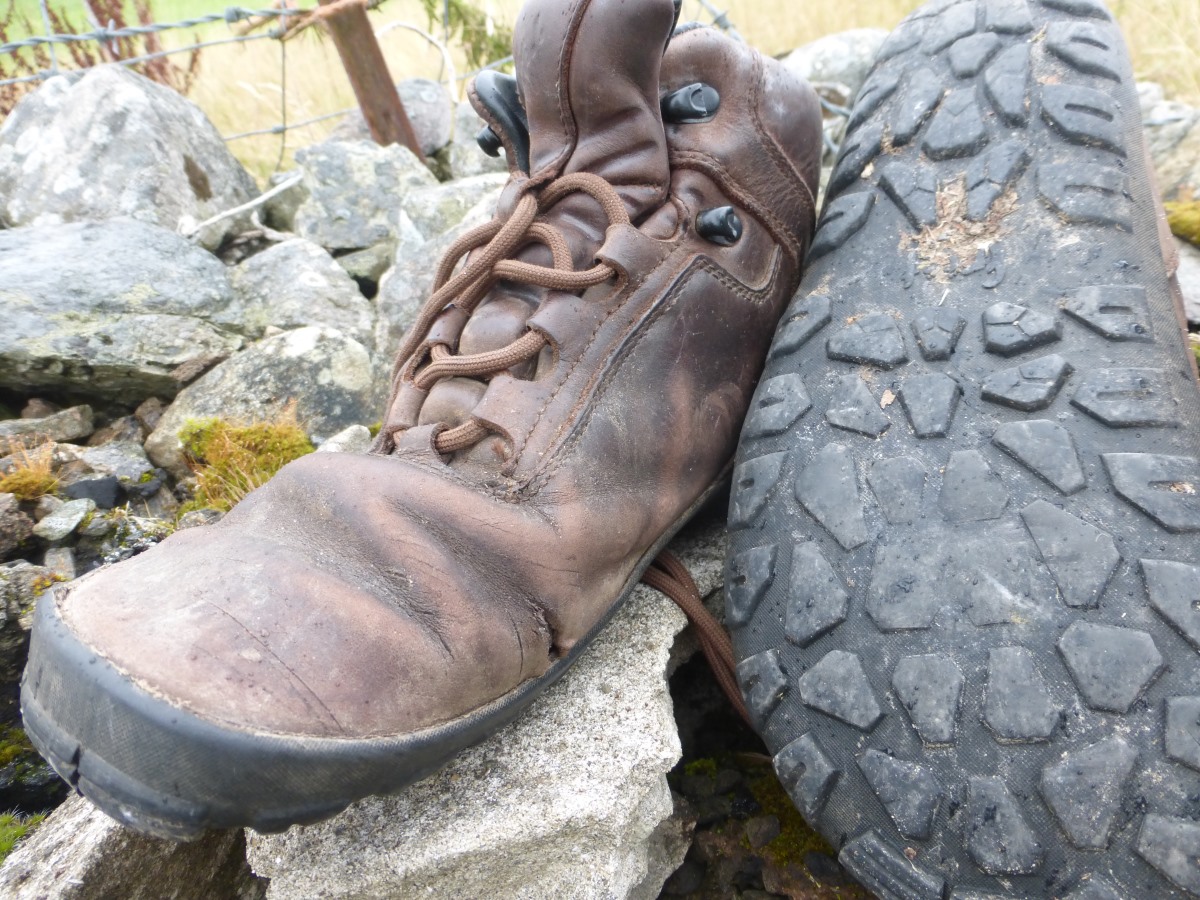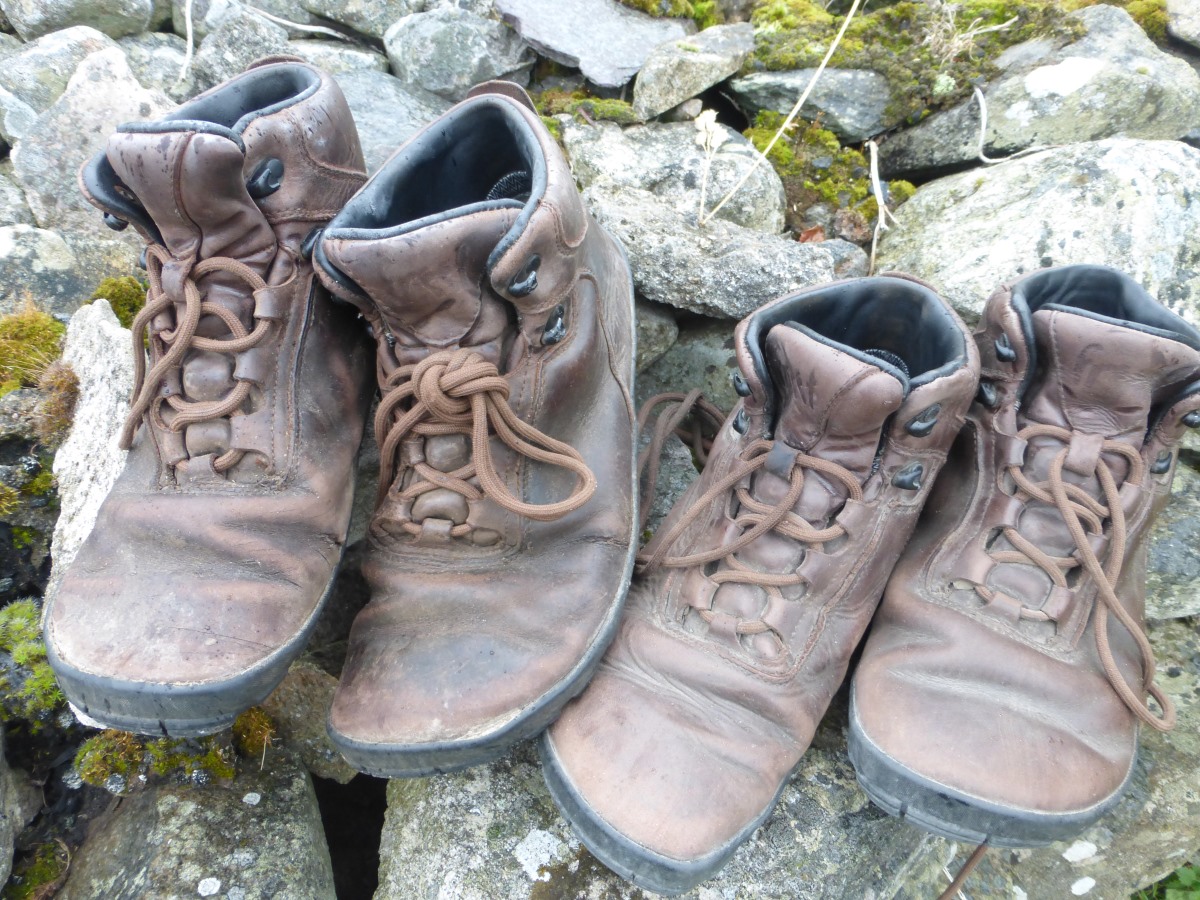The wearing to death of a pair of Freet Ibex
AKA Land’s End to Cape Wrath
It’s not often you get the chance to know exactly how far a pair of boots have travelled, so here is my first gear review, the story of a very long suffering and much abused pair of boots. (The story of the rest of me can be read here). These are a pair of “barefoot” shoes designed to be light and flexible with the ability to feel the ground under your feet as if you weren’t wearing them at all. If this whole concept is new to you there is a great site here which talks about all things shoes and not shoes. I’d been introduced to barefoot shoes by a friend about 2 years previously and had worn them pretty consistently ever since. The only exception being mountainous terrain where I just hadn’t found anything tough, grippy and waterproof enough to replace my old boots. And between the two of us this friend and I have been through quite a few pairs! We decided early on that non waterproof shoes just don’t cut it in British mountains. A pair of waterproof socks will improve matters, and if you’re just out for the day in warm weather then you can embrace the damp, but they don’t work for multi-day trips where the water slowly soaks its way ever inwards. She tried Vivo’s Tracker boots but they didn’t last as long as we were hoping given the price tag. I followed by getting a pair of Xero Fusions and giving them a baptism of fire on my Mountain Leader assessment week. The conclusion was a pair of very soggy and cold feet and (though the Xero Mesa Trails still remain my favourite barefoot trainers and don’t have this problem) the sole material was scarily slippery on wet rock. They were stepped down to be winter town shoes, and I won’t be taking them up a mountain again. Then over winter she appeared with a pair of Freet Tundras (the non-leather version of the Ibex), wore them through an enormous freezing bog and proclaimed her feet dry on the other side. With 2 months to go until the start of my walk I decided to get in on this and bought the Ibex.

Week 1, 50 miles: We (my Ibex and I) set off along the Cornish coast path. My toes are dry cosy and warm with plenty of wriggle room. The boots feel reassuringly chunky (in comparison to barefoot trainers) and well made but the ground feel is still good. My ankles are less happy and after a few days the very top rim of the boot seems to be cutting into my skin, causing a thin line of bruising and swelling where the leather of the outer boot meets the liner. I undo the laces and buy some dish cloths for padding and soldier on but it is tough. Near the end of the week, with the leather showing no sign of softening, I remember that on my last boots I’d used a different style of lacing to get round a similar issue (so maybe the point of this story is that my ankles are oddly shaped, rather than there being anything wrong with the shoes!). If anyone has a similar issue the magic trick is to lace the top two cleats the wrong way round. So go up to the top one first, then back down to the second. Your laces with look crossed and the top rim of the boot will sit a little looser. Week 2, 130 miles: Storms pass through and there is plenty of mud to slip and slide and squelch around in but the feet remain dry and my ankle bruises are healing. On one beautiful sunny morning I pull out the dish cloths, lace them up fully (via the method described above) and never look back. Later on the same day I get my right foot wrapped in a bramble and go flying. The thorns cut three scores into the leather of the boot, one of which is quite deep. This is a chance to reflect that, because the leather is fairly thin soft and flexible and everything that you want for a barefoot feel, it’s never going to be as hardwearing and tough as a “normal” boot. Week 3, 225 miles: I turn inland and have one full day on tarmac for which I have brought with me a pair of the 6mm ortholite insoles which I’m pleased to report work very well. You still get decent ground feel but they noticeably soften the combination of a heavy rucksack and a solid road. Week 4, 315 miles: Nearing Bristol I spend a few days walking through long grassy fields soaked in condensation and finally dampness makes its way in. Dampness is then quickly followed by soddeness, but it’s been nearly a month of daily use with a few weeks of constant mud and ultimately I’m impressed the waterproofing has lasted this long. At the end of the week I have a few rest days with the chance to get the boots properly clean and dry and re-waxed. Week 5, 440 miles: Up the Brecon Beacons I encounter my first mountainous terrain including frosty mornings and a small amount of snow. Happily the feet are warm and comfy throughout. Week 6, 565 miles: The bogs of central Wales are officially too much for the boots. I have several days of saturated feet, followed by a night in a bothy where I do some (in hindsight) overly aggressive drying by the fire and manage to roast the leather somewhat. The following day those old bramble scores have deepened and the boots feel distinctly crispy… I cross the Aranau (900m summits) and am pleased to report that the grip remains good. This next point is not specific to the Ibex but since starting to wear barefoot shoes I’ve found that my balance on difficult mountainous paths has noticeably improved, particularly on the descent where the zero-drop makes a big difference and I’m able to walk much faster and more confidently. Week 7, 665 miles: I rack up some very long days on canal paths. The Ortholite insoles are back in and proving their worth once again, though a few days of lumpy and hard baked mud are tough on the soles. Most of the ground is dry but I do find that whenever I’m in wet grass the water is starting to seep in much more easily than before. Week 8, 700 miles: Up the Pennine Way it now rains pretty solidly for 2 weeks and the ground alternates between hard tracks and deep bogs. Both are tough with my soles becoming bruised even with the extra insoles, and the boots pretty much constantly damp. The edge of the sole is starting to separate very slightly from the leather at the toe of the left boot and water is coming in quite freely here, as it is also on the right where the leather is cracked. Week 9, 780 miles: I have a very sad moment sitting on top of Cross Fell where I realise that what started as a bramble scratch, and then became a well worn and slightly baked crack in my right boot has now become a hole. It’s right in the bend by the ball of the foot and has therefore been subjected to a lot of stress and movement. The left foot (which has been better treated) also has a crack in this position though it is still quite superficial. Week 10, 850 miles: wet feet are the theme of the week, and the hole gets larger. My Dad, who joined in 2 weeks ago in “normal” boots manages to acquire quite a collection of blisters. I don’t generally comment on blisters because I just don’t seem to get them in any shoes, but neither does Dad. In fact he’s never had them before. So at this point I will note that in the entire walk including two pairs of brand new un-broken shoes and weeks of constantly soggy feet I never get a single one. On the subject of that second pair, I realise this week that these ones are not going to cut it in the bogs of Scotland. On a whim I contact Freet to tell them about the walk and am rewarded with 50% off a second pair. I arrange for a friend to bring them to me in the highlands. Week 11, 950 miles: I cross into Scotland. The hole becomes a triangle as the leather starts to rip along the sole of the boot, though the lining is still intact so thankfully no debris is getting in. I make it out of the bogs onto dry ground and, released from the constant dampness, I can appreciate the comfort once more and I can say that these are by far the comfiest and best fitting pair of boots I’ve ever owned. They feel like a pair of old slippers, and are so light I hardly notice I have them on. I will be sad to move onto pair two. Week 12, 1090 miles: I join the West Highland Way and Ibex #2 arrive in the company of a friend. To sum up the final state of Ibex #1, they made it 1010 miles. The right boot has a triangular 2cm hole in it, the left is in slightly better nick but with some pretty deeply worn creases in the bend points of the leather. The soles still have a little bit of tread but not much - I imagine if I’d made it the whole way I would have worn them smooth under the ball of the foot. The soles are also coming away from the leather very slightly around the toes, though this was fairly successfully fixed with the addition of some superglue at 950 miles. I can’t be sure how much the fire-drying or bramble episodes were responsible for their decline but I have subjected other shoes to similar treatment in the past with less detriment.
On to Ibex #2 we made it to Cape Wrath at 1350 miles over a very very large amount of pathless bog. Following this I’ve returned home and spent plenty of days in the mountains of Scotland. I would guess #2 have done about 500 miles by now. I found with my different lacing system that #2 needed no breaking in at all and were as comfy as the ones they replaced by about day 3. They do let in water when immersed in bog for several days but I’ve concluded that this is just something you have to accept if you want light weight, very flexible boots. If you’re day walking and can have them clean, dry and freshly waxed before setting out then they manage remarkably well. Going into winter I’ve paired them with waterproof socks for days when wet feet = dangerously cold feet and been able to stand in 1 degree bog with warm dry toes. Having crossed a couple of rivers in them I can also report that they take about 24 hours to dry fully (while wearing them and continuing to walk on wet ground). I’ve not yet tripped over any more brambles and have kept #2 far away from bothy fires with the result that the leather is still in pretty good condition. But I have noticed the same problem with the soles starting to come away very slightly, this time at the bend point by the ball of the foot and this is an area that is now allowing a little dampness to come in. Ultimately I’ll say that the Ibex are great boots. They are very light, flexible and comfortable, while also managing to be reasonably tough. The soles have good grip and are hardwearing (certainly based on experiences so far I’d expect the top of the boot to wear out before the bottoms). The waterproofing is not perfect but it’s probably about as good as it is reasonable to expect from a pair of boots that, when you stand in >1cm of water, you are soaking the leather. If you compare them in terms of toughness or waterproofing to a pair of “normal” mountain boots they are always going to fall short, but what you gain in lightness, flexibility and comfort I’d say is a fair price to pay. When #2 finally meet their end I will happily buy #3.


